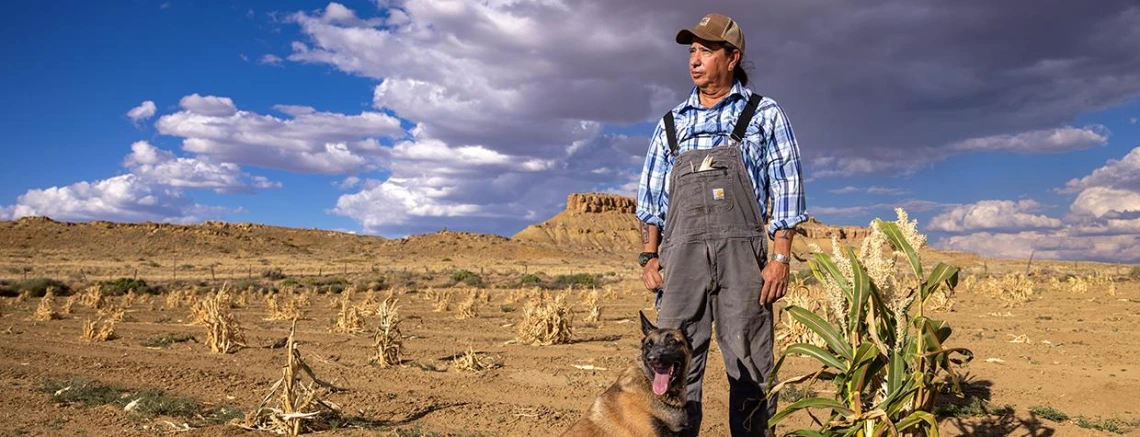Arizona Highways: Michael Kotutwa Johnson

Photograph by John Burcham
Coming up through the Painted Desert from Flagstaff, we pull into the Kykotsmovi Village convenience store, where Michael Kotutwa Johnson greets us. He’s a faculty member at the University of Arizona’s School of Natural Resources and the Environment and a core faculty member of the UA’s Indigenous Resilience Center within the Arizona Institute for Resilience. Today, he wears a shirt with broad, faded stripes and a pair of loose-fitting pants. He’s dressed for a day of farming.
Johnson climbs into his copper-colored 1974 Ford F-250, dinged in a few spots and spattered with dried sandstone mud, and leads us up a dusty road to the farm. He pulls over at a Hopi-style dwelling with irregular stonework and a ladder jutting above the roofline.
While many academics spend their careers cloistered in the proverbial ivory tower, Johnson works for much of the year from this traditional stone-and-adobe house. It took him almost 20 years to craft the rambling structure, room by room. Six inches of dirt insulates the roof. The ceilings are low and the walls irregular, but the house is modern enough to have an office with Wi-Fi and traditional enough to have a round, kiva-like space for contemplation.
Johnson’s voice is gentle, with hints of music in it, befitting the opera career to which he aspired. He speaks in rapid-fire paragraphs, if not always with periods, before punctuating his most cogent points with a resonant laugh. “The house isn’t all straight corners, and it’s a little bit hard to keep clean,” he says. “But this is just home — just natural. When it leaks, it leaks; then I just patch everything right back up. And it didn’t cost that much.”
Johnson stays here with his Belgian Malinois, Soya (named for a Hopi farming tool), dry-farming corn, beans, squash and melons. From a dining room lit by a wagon-wheel chandelier, the windows look toward the cornfield.
For anyone accustomed to the Midwest’s heavily fertilized, densely planted and artificially lush factory farms, Johnson’s crop — widely spaced and planted in neat rows on a bare, sandy rectangle — looks nothing like a field of dreams. But he’s not raising some endlessly hybridized corn variety. He’s growing crops uniquely adapted to Hopi lands.
“I’m a 250th-generation farmer,” he says. “We’ve been farming for over 3,000 years. Yeah, it’s a lot of hard work, but there’s something really tranquil about hard work. This is an honest thing to do.”

